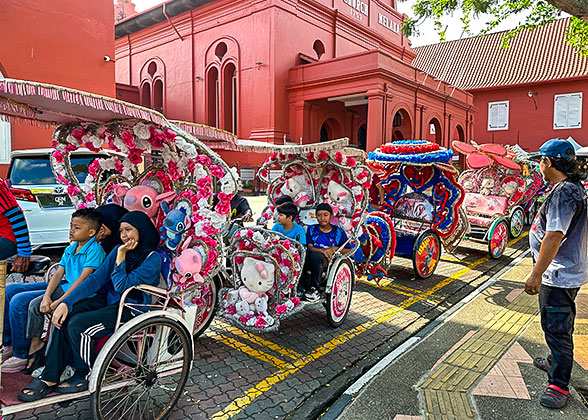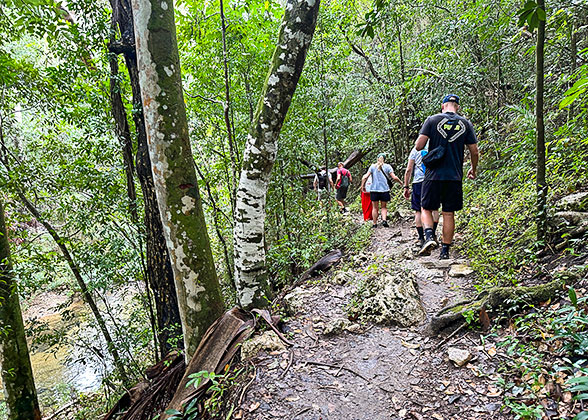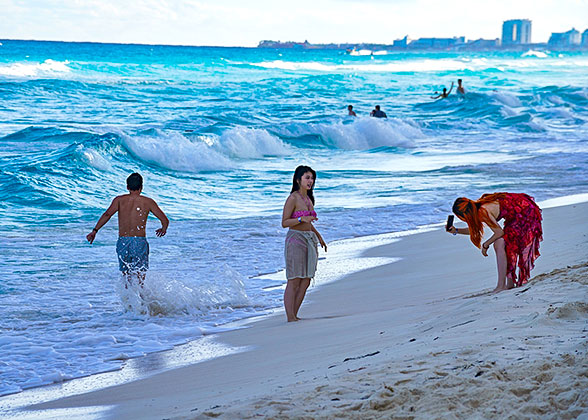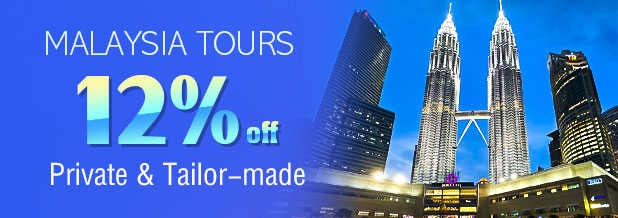Malaysia Weather
Malaysia consists of two parts: the south of Peninsular Malaysia, aka West Malaysia, and the north of Kalimantan Island, aka East Malaysia. Both of them are situated near the equator and belong to tropical rainforest climate zones, hot and rainy all year round. The climate of Peninsular Malaysia is also influenced by monsoon, where the eastern and western coasts take turns to experience their rainy season. Kalimantan Island is more affected by the Northeast Monsoon, while the Southwest Monsoon has little impact on the region. Besides, highlands and inland areas see a lower temperature, like Cameron Highlands.
![]() Best Time to Visit: All Year Round
Best Time to Visit: All Year Round
High Temperature All Year Round
Malaysia experiences no distinct temperature difference throughout the year. Its temperature is relatively stable all year long, ranging from 24 - 34 °C (75 - 93 °F). Specifically, March, April, and May are the hottest months of the year, with the recorded highest once reaching 37 °C (99 °F) in Ipoh in May.
The central part of Peninsular Malaysia has relatively lower temperatures because of high altitude. The coolest place in Malaysia is Cameron Highlands, with the average annual lowest temperature of 14 degrees Celsius (58 degrees Fahrenheit), and the average annual highest temperature of 24 degrees Celsius (76 degrees Fahrenheit).
High Precipitation Totaling 2,000-3,000 mm Annually
Dominated by a tropical rainforest climate, Malaysia maintains large rainfall and high humidity throughout the year. Its average annual precipitation is about 2,000-3,000 mm. November is the wettest month of the year, with the precipitation reaching 313 mm, while June is the driest month with rainfall of 157 mm.During the Southwest Monson season from May to October, the west coast of Peninsular Malaysia receives more rainfall than usual while the east coast has more rainfall in Northeast Monson Season from November to February.
The good thing is the rainfall in Malaysia is mostly short and heavy showers, generally concentrated in the afternoon, so won’t affect your itinerary a lot.
Weather for More Malaysia Destinations:
Regional Weather in Malaysia
The West Coast of Peninsular Malaysia
Major Destinations: Kuala Lumpur, Malacca, Penang, LangkawiWeather Description: It rains more from May to October in the west of the Peninsular Malaysia caused by the Southwest Monsoon. But don’t worry the rainfall affecting your schedule as the showers are usually brief. The average high temperature reaches 32 degrees Celsius (90 degrees Fahrenheit). Luckily, these short showers can help bring down the high heat. The average low temperature stabilizes around 22 degrees Celsius (73 degrees Fahrenheit).
Best Time to Visit: Plan your visit from November to February because of relatively less rainfall. Chinese New Year usually falls in the ending of January to the middle of February, when it’s a good chance to experience strong festival atmosphere in Kuala Lumpur and Penang. Besides, it’s quite warm and it doesn’t rain much in Langkawi during this period, inviting you to have a laid-back holiday journey with crystal-clear water and soft white sand.

Hot Weather in Malaysia
|
The East Coast of Peninsular Malaysia
Major Destination: Kota Bharu, Kuala Terengganu, KuantanWeather Description: Due to Northeast Monsoon, the rainfall in the eastern region tends to be heavier between November and February. The rainfall peaks in November and December, when it significantly surpasses the rainfall of other months. In November alone, the eastern coast receives over 650 mm of rain. It’s obvious that the intensity of rainfall on the east coast is much higher than that of the west coast during the monsoon period. The average high temperature hovers around 29 - 33°C (84 - 91°F), while the average low average temperature ranges from 23 - 25°C(73 - 77°F).
Best Time to Visit: Opposite the other side of Peninsular Malaysia, the eastern coast welcomes tourists from March to October. May to August is the best time to see Green Turtles on Redang Island when they nest. If you are interested, go there during these months of 2025 to witness this incredible natural phenomenon up close. It’s recommended to take a Mangrove River Cruise in Kuantan in March and April, as it’s breeding season for tropical animals. There are high possibilities to see monkeys showing off and birds flirting.

Malaysia Mangrove River Cruise
|
The North of Kalimantan Island (East Malaysia)
Major Destination: Kuching, Bintulu, Kota Kinabalu, SandakanWeather Description: Sabah and Sarawak are two major states in East Malaysia. They have a tropical rainforest climate, hot and rainy. However, the rainfall is not evenly distributed throughout the year. This area is significantly affected by Northeast Monsoon from November to February, bringing lots of rainfall in the east of Sabah and Sarawak. The overall annual precipitation generally can exceed 2,500 mm. The temperature remains relatively consistent, ranging between 24 degrees Celsius (75°F) and 33 degrees Celsius(91°F) year-round.
Best Time to Visit and Where to Go: The best time to visit the north of Kalimantan Island depends on the region you plan to explore, as the rainfall patterns differ across the area. Generally, the period from March to October is considered the best month to visit as the weather is drier and the possibility of rain is lower. If you want to explore Kota Kinabalu, the capital of Sabah, the months of February to April tend to be drier. One of the most famous destination near Kota Kinabalu is Mount Kinabalu. It is the highest mountain in Malaysia, providing climbers with a great chance to challenge themselves. Relatively dry weather does not pose additional dangers for them.

Hotel in Malaysia
|
Clothes to Wear
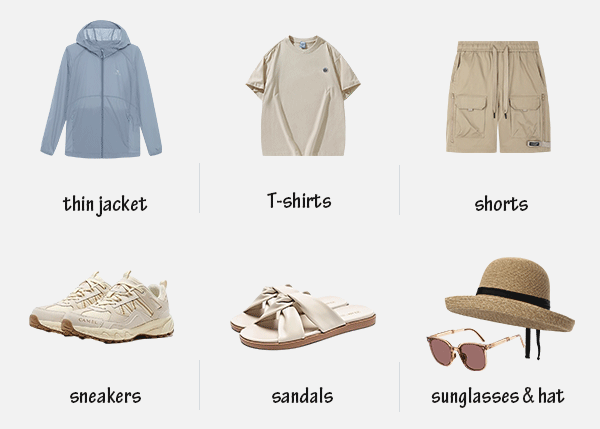
|
1. Daily Outfits
T-shirts and shorts are ideal for the warm, humid weather.
A light jacket is recommended for two reasons: the air-conditioning can be surprisingly strong in indoor places like shopping mall and restaurants; it can be cold in highland areas after sunset.
2. Footwear
Sneakers: A pair of comfortable sneakers is perfect for walking hours in the city, visiting attractions or exploring nature.Slippers: Ideal for beach days or relaxed strolls. They are easy to slip on and off and go with the tropical environment.
3. Sun Protection Items
Sun exposure is not to be ignored, especially when the sunlight gets intense. Therefore, sun protection is a must, not only just for keeping your skin fair but also for preventing sunburn. Don’t forget to pack: Sunscreen, Sunglasses, Hats or Caps.
4. Dress Codes for Religious Sites
When visiting mosques or other religious places, women should cover their heads with a scarf, and avoid exposing their arms and legs.


